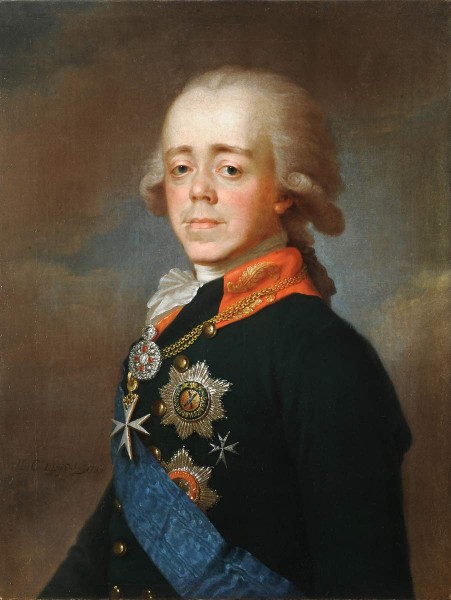The artist is Schukin

Pavel I Petrovich (September 20 / October 1, 1754, St. Petersburg − March 12/24, 1801, St. Petersburg) − The only son of Emperor Peter III and Empress Catherine II. In 1762 he was declared the heir to the throne with the title of Tsarevich. He received a brilliant education, romantically believed in the ideals of enlightened absolutism, but critically referred to the policy of Catherine II. For decades, he languished in anticipation of the authorities usurped mother. Since 1796 – Emperor. Sought to the good of the state, but often acted contrary to common sense. In 1797, during a coronation in Moscow, the Decree “Institution on the Imperial Surname” was published, which established the inheritance of the throne by law of birthright in the male knee. Reformed the local department. Narrowed the rights of the nobility, allowing bodily punishment for him. Military reforms affected not only uniforms and weapons, but also training, tactics of officers and soldiers. Focused on the Prussian military system. In an effort to protect Russia from revolutionary ideas, he forbade the import of books from France and tightened Cesura for Russian publications. In 1798, he adopted the title of the Grand Master of the Order of St. John of Jerusalem (the Order of Hospitallers), taking it under his patronage. On the night of March 11 to March 12, 1801, he was killed by the conspirators in the Mikhailovsky castle, and according to the official version, he died from an apoplexy blow (paralysis).
Anna Metelkin. Exhibition catalog in Malaga "The Romanov dynasty". 2017. With. 259.
The emperor is depicted in the uniform of the Life Guards of the Preobrazhensky Regiment, with the orders of St. Andrew the First-Called (Ribbon and Star), St. Alexander Nevsky (Star), St. Anna of the I degree (cross with diamonds) and St. John Jerusalem (Cross and Star).
Elena Stolbova. Exhibition catalog in Malaga "The Romanov dynasty". 2017. With. 260.
+ About the restoration of the work
– Hide the text about restoration
The state of safety before restoration:
The portrait entered a restoration with a very rigid large -knit craquelure with raised edges, and with hard breaks. Dark multi -layer varnish and he hidden podlas pollution and records distorted the author’s color scheme. Kraqualer was repeatedly strengthened in the process of being, but the canvas due to oxidation and aging could no longer cope with the loaded front side. The varnish coating was also periodically refreshed, separate notes were applied, which created a dense late layer that recorded the elations. The image of the Emperor’s face was greatly reproached for significant scuffs, which most likely appeared from excessive wiping the surface of a colorful layer from dust. Records were in the nature of “improvement” and image updates. The picture needed a complete complex of conservation and restoration work.
Complex of the events:
During the restoration process, a complex strengthening of painting was performed with laying raised breaks and craquelure, for which methods were applied that contribute to plasticizing and facilitating work with hard cup -shaped craquelure. The base of the portrait weakened as a result of natural aging was duplicated on a new canvas. To restore the transparency of the varnish layers, their regeneration was carried out. Clearing the colorful layer from thick varnish and from podlas contaminants allowed to eliminate the surface voltage, causing the elevation of craquelure, open the original colors, remove late entries. After duplication, stretching on a new subframe, removing varnish and pollution, the finest tinting was performed. In order to correctly restore the author’s interpretation of painting on scuffs in the image of the face, a number of well -known portraits of Paul I were studied, including a sculptural bust created by Shubin F.And. After restoration of the portrait, the author’s color sound was returned, the interpretation of the facial features lost in the process of being lost in the process of existing.
Keeping a story. Restoration workshop of the Russian Museum – 100 years. SPb, 2022. With. 91.
Leave a Reply